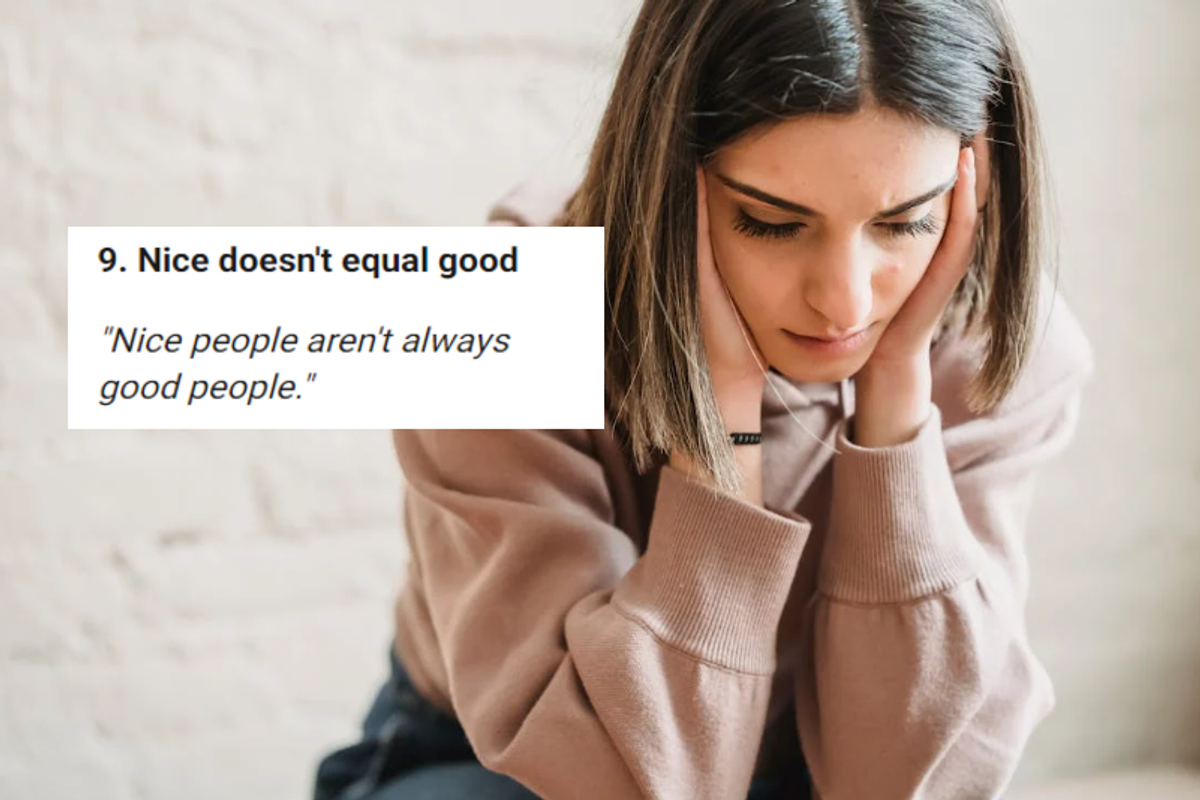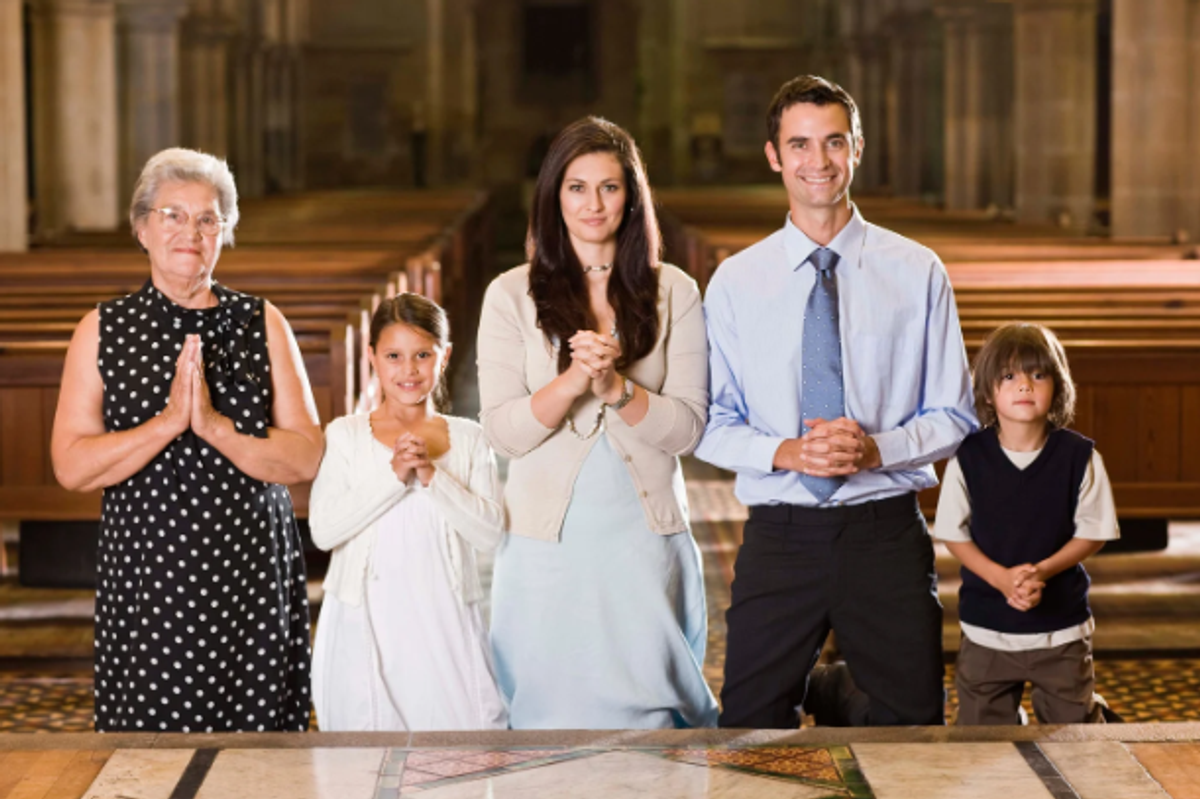Fining fat people unless they exercise is a bad, offensive idea. Here are 10 reasons why.
"What's the key to tackling obesity? Fine fat people if they don't exercise, say experts," shouted a headline in The Daily Mail on Tuesday.
Photo by Anthony Hyatt/U.S. Air Force/Wikimedia Commons.
"FINE fat people if they don't exercise," is actually what it said. With "FINE" in all caps. When The Daily Mail yells, you better believe it yells.
But, um. Fine people for being fat? Like, charge them actual money? Seriously? This is a thing? Why?
The righteous declaration was based on the results of a single study recently published in the Annals of Internal Medicine, which looked at 281 people who had BMIs over 27 (around 27 is considered "overweight" on the Body Mass Index scale, although the actual usefulness of BMI as a measure of how fat or not fat someone is has been a source of much controversy). The researchers rewarded people in one group with $1.40 per day if they met a set goal of 7,000 steps. They gave people in the other group $42 up front, but docked them $1.40 per day if they didn't meet the goal.
Sure enough, the people in the group that was being fined met their step goal more frequently.
As a fat person who likes keeping all my money as opposed to forking an arbitrary percentage of it over to judgmental scientists, this didn't really sit right with me. So I did some digging to prove this idea is, in fact, as ridiculous as it seems.
Spoiler alert: It didn't take much digging.
1. The whole premise of the study rests on a really shaky assumption.
A money fan. Photo by Steven Depolo/Flickr.
Researchers tested their monetary loss/reward hypothesis specifically on fat people. And it's not surprising it worked! It's pretty well-established in psychological research that people are typically more motivated by fear of loss than possibility of reward. And, fat people are, of course, people.
The problem is that this particular experimental setup assumes that "obesity" is the opposite of exercise. Which is a bit like saying that going to a French restaurant is the opposite of going to a Mexican restaurant, or that kayaking is the opposite snorkeling, or that watching "The Bachelor" is the opposite of hitting yourself repeatedly in the head with a small hammer. The things are kinda-sorta related, but actually not directly opposed. You can do/be both!
It's hard to blame the experts for framing the study that way. The assumption that fat people are people who don't exercise and that people who exercise aren't fat is super-double-plus-infinity ingrained in our culture.
But that's not actually true.
2. Exercising doesn’t necessarily make people lose weight.
"With obesity levels reaching epidemic proportions. Global experts in the field are focused on one goal — reversing the trend. Key to the battle is encouraging people who are overweight or obese to exercise more." That's how The Daily Mail frames the study. Exercise more, shed pounds.
To that I say: This is Prince Fielder.
Prince Fielder. Photo by Ronald Martinez/Getty Images.
He's a professional baseball player. Not just any professional baseball player — a really, really good professional baseball player. One of the best, even. In order to be such a good baseball player, he has to exercise virtually every second of every day. He's constantly in the gym. He runs wind sprints after batting practice. He has to do that high knee thing.
If exercising reliably made people skinny, Prince Fielder's torso would look more like Trey Songz's torso.
Trey Songz x 2 = Prince Fielder. Photo by Dimitrios Kambouris/Getty Images.
But he doesn't. He's fat. Which is not surprising! And not a bad thing! Lots of researchers believe that exercise has little to nothing to do with weight loss.
"A lot of people probably think I'm not athletic or don't even try to work out or whatever, but I do," Fielder told ESPN in 2014. "Just because you're big doesn't mean you can't be an athlete. And just because you work out doesn't mean you're going to have a 12-pack."
"OK," you're probably yelling at your screen, "But that's just one guy! I am a casually professional statistician, and that is what we in the stats biz like to call an 'outlier.' Little statistics jargon for ya. Like what I did there? "
To which I say: Fine. Exhibit B, suckers.
Take a gander at Cecil Fielder.
Photo by Jed Jacobsohn/Getty Images.
Back in the '90s, he was one of the best baseball players alive. He hit over 300 home runs in his career, including 51 in 1990. He can probably lift three of you. And he was also fat.
He also happens to be Prince Fielder's dad.
What are the odds? Two men in the same family — a father and son! — both athletes who, when at the top of their game, were better than basically any of their peers, who also happen to both be fat.
It's almost as if how fat you are has a lot more to do with your genes (and environmental factors) than with the fact that you're a lazy bum who just lacks willpower and doesn't deserve respect or even love.
3. You can be fat and in good shape.
The premise of the study presumes the need to force fat people to do more physical activity. But not only is it completely possible to be fat and not in bad shape, it's possible to be fat and actively in good shape. Really good shape, even.
Like Mirna Valerio.
Photo by Mirna Valerio, used with permission.
She's fat. She runs ultramarathons. Ultramarathons are like marathons, but longer, and for people who are so physically superior to the rest of humanity, they think regular marathons are too easy.
There are fat people who are amazing at yoga. Fat people who kill it in endurance events. Fat people who pole dance (That takes work! You try that shit). Fat people who could beat you in any contest of physical supremacy known to man while still being undeniably, incontrovertibly fat.
Also, remember Richard Simmons?
Photo by Stephen Shugerman/Getty Images.
He was in amazing shape. Dude was in such good shape he got paid millions of dollars to yell at other people to get in shape. And he was kind of fat.
(Side note: Remember when the mere fact of Richard Simmons' existence was a joke that people would laugh at? Just "Richard Simmons!" That was the whole joke. That was all the work you needed to do. Because he was sorta fat and seemed gay? People 25 years ago were so dark!)
4. Who’s going to enforce this fat person fine and how?
Sir, please step out of the vehicle. I need to jiggle your tummy. Photo by Lennart Preiss/Getty Images.
OK, so let's say we take the conclusion of the study at face value and we start fining fat people. Who serves the fat people fines in this scenario anyway? Doctors? Personal trainers? Will cops start pulling fat people over on the street? What if a fat person is driving a car instead of jogging? That's not physical activity! Can you be pulled over for driving while fat? What if the fat person is riding a Segway? A fat person on a Segway! Is that exercise? Are enough muscles engaged? Some poor state legislator will have to miss his daughter's T-ball game to stay late at the office in order to game out the precise policy and legal status of a fat person riding a Segway.
It would be chaos! Bureaucracy will explode! Your taxes will go up!
But I'll give the paper the benefit of the doubt. The Daily Mail is published in the U.K., and the laws are different over there. Maybe they've figured out an easy way to go about this. “We’ll just bobby the carriage on the loo!” the Nottingham North MP might be saying right now.
And that's great. Perfect, even. Perfect British solution. Don't understand it, but maybe they know what they're doing.
Next question, though:
5. Let's back up even a little further. Who decides who is fat and eligible for a fine in the first place?
Your Aunt Caroline. Photo via iStock.
Is it your Aunt Caroline? Because it doesn't matter how skinny you get, she still thinks you're fat. (Except when you're truly fat. Then she thinks you've lost weight.)
6. Is this another thing that's for "our own good?" 'Cause lots of people like being fat and/or really don’t give a shit about how much they weigh.
Barney Frank, patron saint of not giving a shit. Photo by Win McNamee/Getty Images.
Former congressman Barney Frank once quipped, "The day I die, I will either be fat or hungry." It's a sentiment that a lot of fat people relate to. Which makes a lot of sense, as life is finite and food is delicious! So even if you do care about how much other people weigh or how much you weigh, there's a good chance that other people don't and they really aren't all that interested in inane policy solutions to their non-problems.
7. And by the say, that study the Daily Mail was citing? It wasn't as conclusive as the article makes it seem.
All studies, even psychology studies, happen in test tubes. Photo by National Cancer Institute/Wikimedia Commons.
The researchers were actually measuring two things with the study — whether participants in the "fine" group would achieve their step goal more frequently and whether the fines would lead to participants taking more steps. The group that was being fined did meet their goal on more of the days, but their average number of steps didn't increase by a statistically significant amount over the required baseline.
You'll also notice that participants weren't really "fined," per se. They were rewarded in advance and docked portions of their reward for not meeting the goal. Which is less like paying a fine, and more like ... paying taxes. Which everyone loves to do and is no problem at all. Ever. Right?
8. Why does anyone care how much other people weigh?
Undoubtedly, there are many people in this world who are both fat and don't exercise. You might think this is unjust. You might experience a surge of anger at this thought. You might have half a mind to burst into the apartment where the fat and lazy people live (we all room together) and shove a bag of celery down their throats. You're just so mad!
"You! Stop it you! Stop being fat!" Photo by PourquoiPas/Pixabay.
It's an interesting outlook, and it raises a critical question...
Why?
Why do you give a shit?
Don't you think it's weird to care about what another human being weighs. I mean, when you think about it? Are you trying to distract yourself from something? Are you bored? Do you need an activity? What about skiing? I went skiing last February with my old boss, and it was actually pretty fun!
Of course, I'm fat and don't exercise, so I was pretty much done after 90 minutes, but you'll definitely do better.
9. Really?
Just, like, really? Fining fat people? This is a serious suggestion?
GIF from "Saturday Night Live."
10. How about we all just STFU about how much other people weigh.
Basically, the best way to get fat people to lose weight is to STFU and mind your own business. It may or may not actually have your desired effect, but it will help you not lose friendships and/or get punched in the face by people who already know they are fat and don't need you telling them that's a bad thing (which is not only unbelievably annoying and rude, it actually does not work to make people not fat anymore).
In conclusion, regardless of whether or not they exercise, don't fine fat people.
In special extra conclusion, here are some fine fat people:
Ooh, 2010 Chris Pratt, you're fine! Photo by Frazer Harrison/Getty Images.
Damn, Octavia Spencer! Photo by Jason Merritt/Getty Images.
William Howard Taft, you're not particularly fine, but you're so fat all the presidents after you stopped being even a little bit fat because why try? And that's just so much respect right there. Photo by Hulton Archive/Getty Images.
Rebel Wilson. Nice work! Photo by Eamonn M. McCormack/Getty Images.
And of course...
Richard Simmons in the '90s. OG. Photo by Stephen Shugerman/Getty Images.









 Theda Bara
Theda Bara 
 Comparison is the thief of joy.
Comparison is the thief of joy.  Things don't care if you throw them away.
Things don't care if you throw them away.  You might be the villain in someone's story.
You might be the villain in someone's story.  We judge others differently than how we judge ourselves.
We judge others differently than how we judge ourselves.  Nobody is paying attention to you (and that's a good thing).
Nobody is paying attention to you (and that's a good thing).  We accept the love we think we deserve.
We accept the love we think we deserve. 
